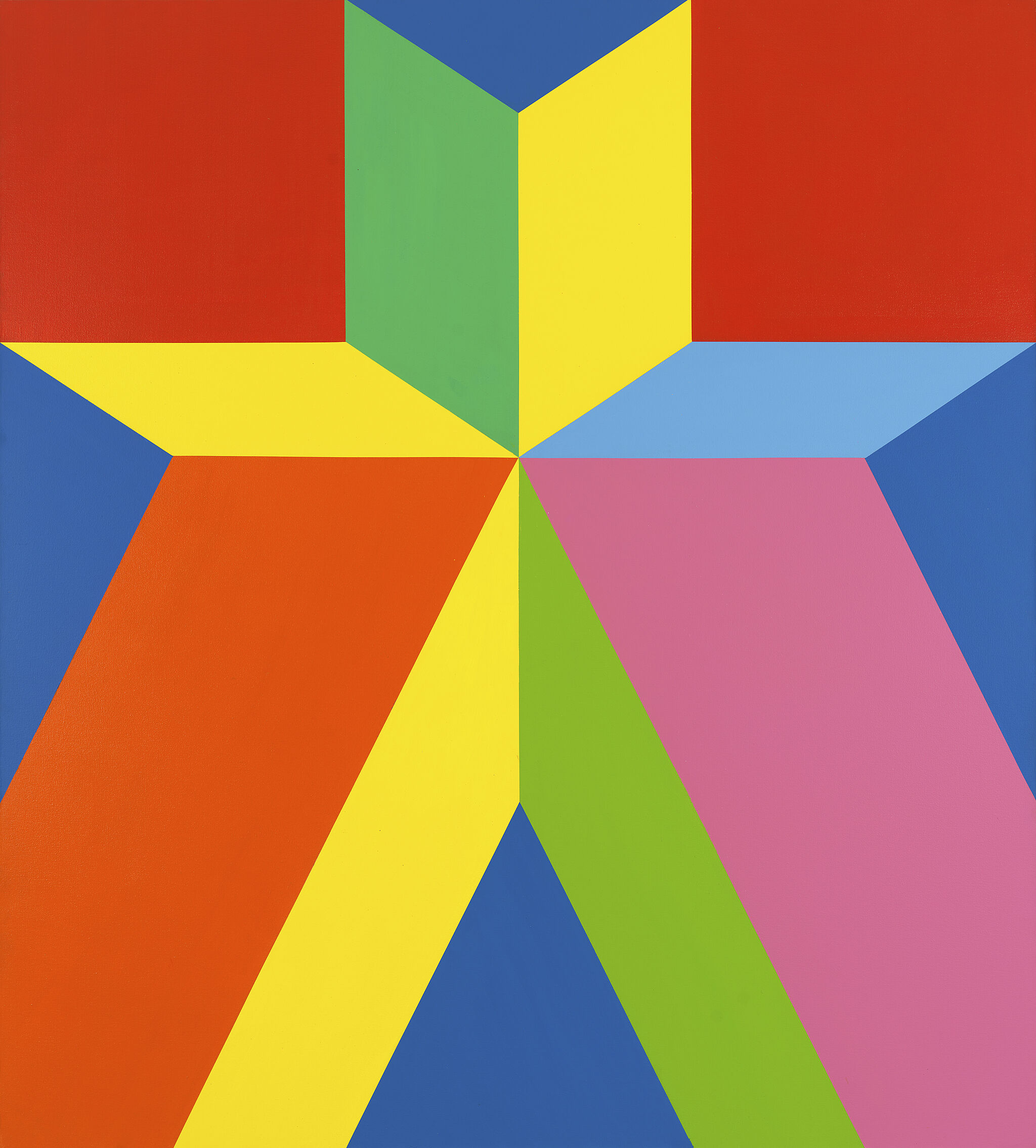Spilling Over: Painting Color in the 1960s | Art & Artists
Mar 29–Aug 18, 2019
Spilling Over: Painting Color in the 1960s | Art & Artists
Miriam Schapiro
15
In paintings like Jigsaw, Miriam Schapiro explored how geometric abstraction could serve both formal and feminist concerns. Here, she experimented with the spatial effects of color, using hues in this painting that she described as “blinding and high keyed, enough so as to optically distort the form.” Although she would not become explicitly associated with feminism until after 1971, when she advanced the Feminist Art Program with Judy Chicago at the California Institute of the Arts (CalArts), such early paintings contain oblique references to the body and gender identity. At this time, she often adopted geometries that resembled apertures and passageways evocative of the female body. If a human figure is implied in this painting, however, it is hard to read as male or female—a rebuke of the idea that gender can be simply defined and categorized.

